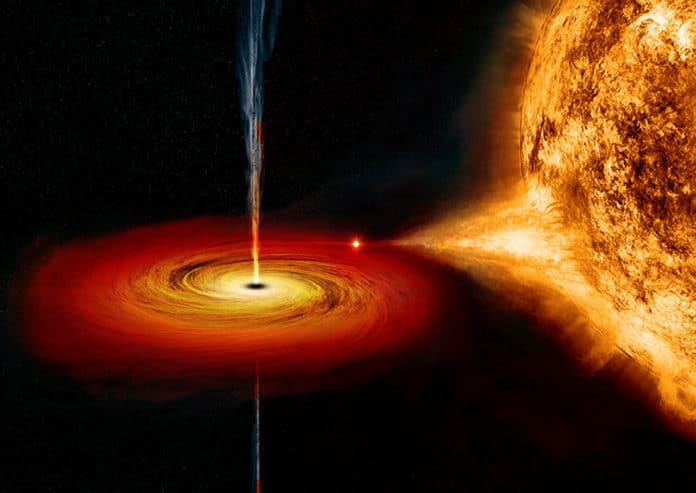Astronomers have recently captured an outburst in the form of radio jets from a black hole that is located in our Galaxy about 10,000 light-years from Earth. The actual velocity of the particles in both jets is higher than 80% of the speed of light.
The black hole and its companion star make up a system called MAXI J1820+070. The new footage of this black hole’s behavior is based on four observations obtained with Chandra in November 2018 and February, May, and June of 2019 along with radio observations conducted with the VLA and MeerKAT arrays.
The discovery of the outburst in the form of X-ray sources is associated with the radio jets moving at relativistic velocities with a possible deceleration at late times.
MAXI J1820+070 is the bright X-ray source in the middle of the image, and causes of X-rays can be seen moving away from the black hole in jets to the north and south. MAXI J1820+070 is a point source of X-rays, although it appears to be larger than a point source because it is much brighter than the jet sources. The southern jet is too faint to be detected in the May and June 2019 observations.
Credit: X-ray: NASA/CXC/Université de Paris/M. Espinasse et al.; Optical/IR:PanSTARRS
According to scientists, about 400 million billion pounds of material must blow away from particle during this outburst. This amount of mass is comparable to what could be accumulated on the disk around the black hole in the space of a few hours. It is equivalent to about a thousand Halley’s Comets or about 500 million times the mass of the Empire State Building.
Journal Reference:
- Mathilde Espinasse, Relativistic X-ray jets from the black hole X-ray binary MAXI J1820+070. DOI: arXiv: 2004.06416v1
